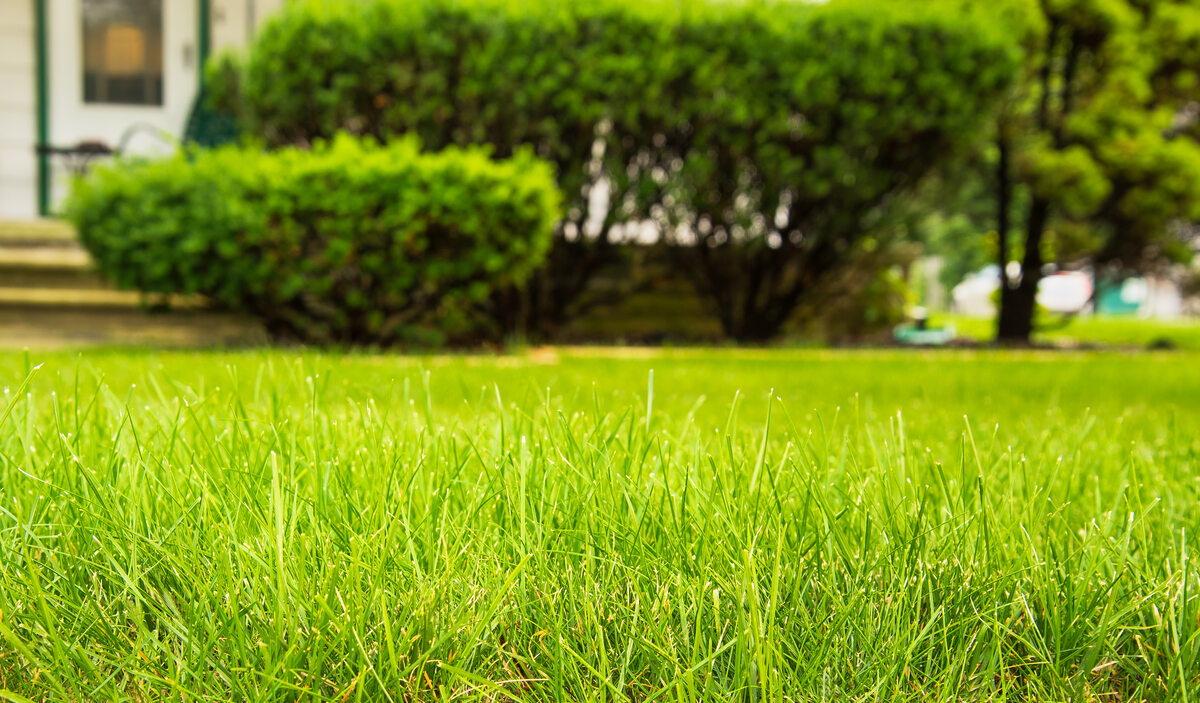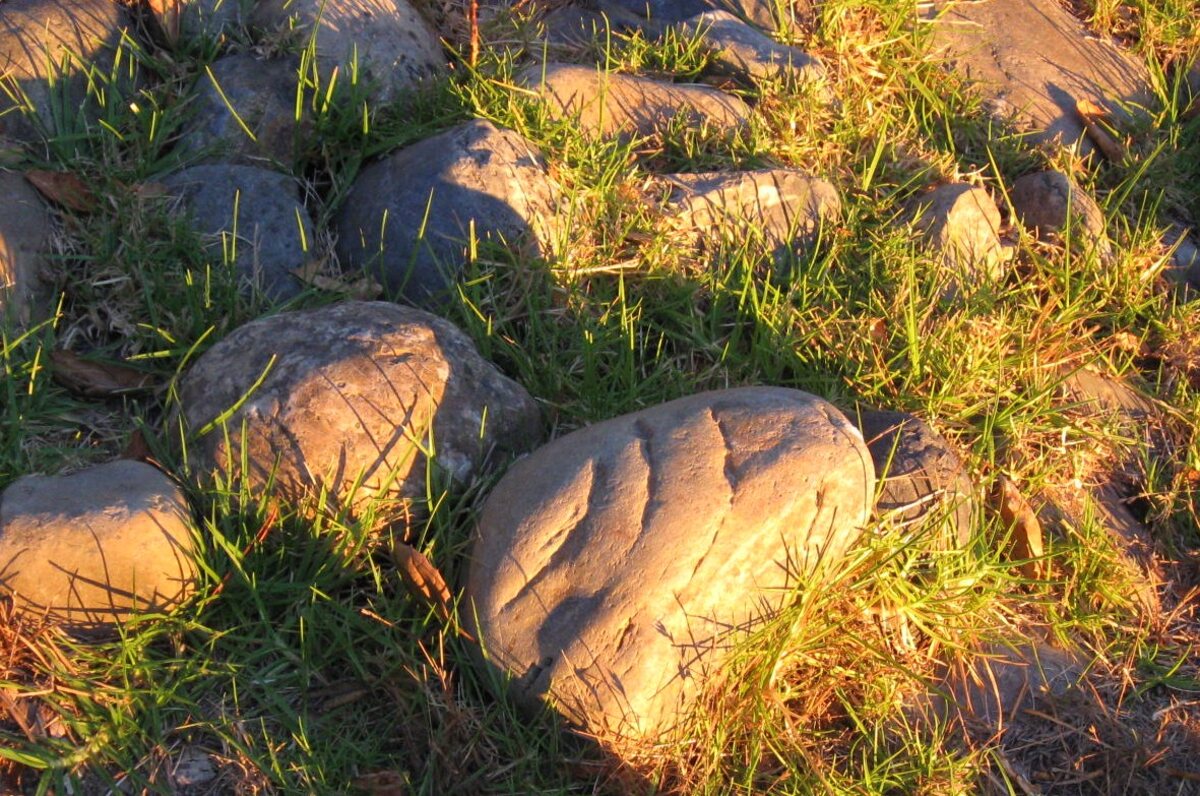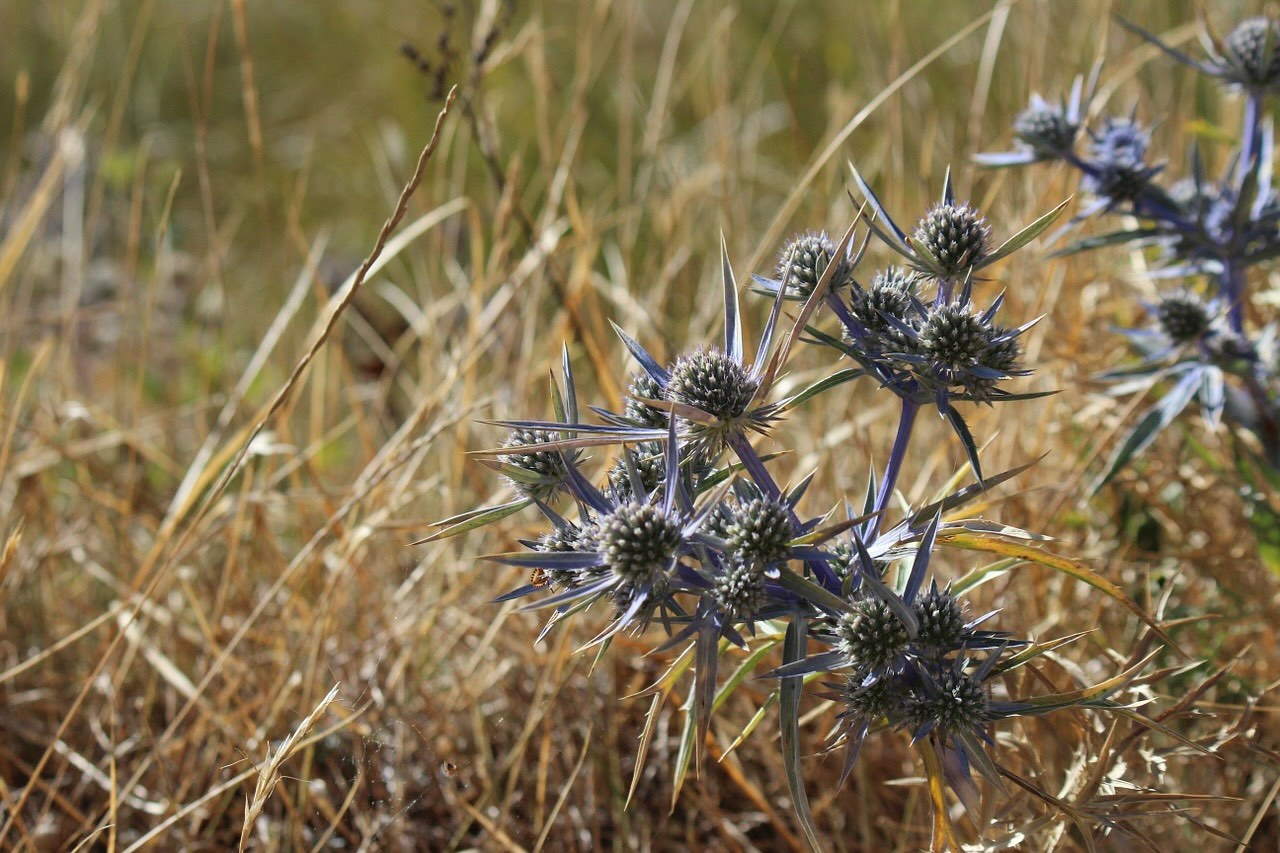Home>Gardening & Outdoor>Landscaping Ideas>How To Get Great Grass


Landscaping Ideas
How To Get Great Grass
Modified: September 2, 2024
Learn effective landscaping ideas for achieving a lush, healthy lawn with our expert tips and techniques. Discover how to get great grass today!
(Many of the links in this article redirect to a specific reviewed product. Your purchase of these products through affiliate links helps to generate commission for Storables.com, at no extra cost. Learn more)
Introduction
Creating a lush, vibrant lawn is a dream for many homeowners. A well-maintained lawn not only enhances the aesthetic appeal of your property but also provides a comfortable space for relaxation and outdoor activities. Achieving the perfect lawn requires careful planning, proper maintenance, and a deep understanding of the grass species that thrive in your specific region.
In this comprehensive guide, we will delve into the essential steps for cultivating and maintaining a healthy, beautiful lawn. From selecting the right grass seed to addressing common grass problems, we will cover every aspect of lawn care to help you achieve the lawn of your dreams.
Whether you're starting from scratch with a new lawn or looking to revitalize an existing one, this guide will equip you with the knowledge and techniques needed to nurture your grass to its full potential. So, roll up your sleeves and get ready to embark on a rewarding journey toward a greener, lusher lawn.
Key Takeaways:
- Choose the right grass seed based on climate, sunlight, soil, and maintenance needs for a lush lawn. Prepare the soil meticulously for successful grass growth by clearing, testing, aerating, and fertilizing.
- Proper watering, fertilizing, mowing, and maintenance are essential for a healthy lawn. Address common grass problems like weeds, diseases, insects, soil compaction, and environmental stress to preserve the vitality and beauty of your turf.
Choosing the Right Grass Seed
Selecting the right grass seed is a critical first step in establishing a healthy and resilient lawn. The choice of grass seed should be based on several factors, including climate, soil type, and the specific requirements of your lawn. Here's a detailed look at the key considerations for choosing the right grass seed:
Climate Compatibility
The climate of your region plays a pivotal role in determining the type of grass seed that will thrive in your lawn. For instance, cool-season grasses such as Kentucky bluegrass, fescue, and ryegrass are well-suited to regions with cold winters and hot summers. On the other hand, warm-season grasses like Bermuda grass, Zoysia grass, and St. Augustine grass are better suited to areas with mild winters and hot, humid summers. Understanding the climate compatibility of different grass species is essential for ensuring successful germination and long-term growth.
Sunlight and Shade
Assessing the sunlight and shade patterns in your lawn is crucial for selecting the appropriate grass seed. Some grass species, such as fine fescues, thrive in shaded areas, making them ideal for lawns with limited sunlight. Conversely, sun-loving grasses like Bermuda grass and Zoysia grass are well-suited to open, sunny lawns. By understanding the sunlight and shade dynamics of your lawn, you can choose grass seed that will flourish in its specific light conditions.
Soil Type and pH
The composition and pH level of your soil significantly impact the growth and health of your grass. Different grass species have varying soil preferences, with some thriving in acidic soils while others prefer alkaline conditions. Conducting a soil test to determine the pH level and composition of your soil is essential for selecting grass seed that is well-suited to your lawn's specific soil type.
Read more: How To Get The Best Grass
Maintenance Requirements
Consider the maintenance requirements of different grass species when choosing the right grass seed for your lawn. Some grasses, such as Kentucky bluegrass, require regular mowing and fertilization, while others, like Buffalo grass, have lower maintenance needs. By aligning the maintenance requirements of the grass seed with your available time and resources, you can ensure that your lawn remains healthy and vibrant with minimal effort.
By carefully considering these factors and conducting thorough research on the various grass species available, you can make an informed decision when choosing the right grass seed for your lawn. Investing time and effort in selecting the most suitable grass seed will set the foundation for a thriving and visually appealing lawn that you can enjoy for years to come.
Preparing the Soil
Preparing the soil is a crucial step in establishing the foundation for a healthy and vibrant lawn. By creating an optimal environment for seed germination and root development, you can significantly enhance the overall health and resilience of your grass. Here's a detailed look at the essential tasks involved in preparing the soil for successful grass growth:
Clearing and Leveling
Before seeding your lawn, it's important to clear the area of any debris, rocks, or existing vegetation that may hinder the growth of new grass. Use a rake or a specialized lawn de-thatcher to remove dead grass, thatch, and other organic matter, allowing the soil to breathe and absorb nutrients more effectively. Additionally, ensure that the soil is level and free of any major bumps or depressions, as an even surface promotes uniform seed coverage and facilitates proper drainage.
Soil Testing and Amendment
Conducting a soil test is a critical step in understanding the composition and pH level of your soil. This information will guide you in making necessary amendments to create an optimal growing environment for your chosen grass species. Based on the soil test results, you may need to adjust the pH level by adding lime to raise the pH or elemental sulfur to lower it. Furthermore, incorporating organic matter such as compost or well-rotted manure can improve soil structure, fertility, and moisture retention, providing an ideal foundation for healthy grass growth.
Read more: How To Get Grass To Spread
Aeration
Aerating the soil helps alleviate compaction and promotes better air, water, and nutrient penetration to the grassroots. Depending on the size of your lawn, you can use a manual or mechanical aerator to perforate the soil, creating channels for improved root development and overall soil health. Aeration also facilitates the breakdown of thatch and enhances the decomposition of organic matter, contributing to a more robust and resilient lawn.
Fertilization
Applying a balanced, slow-release fertilizer before seeding can provide essential nutrients to support initial grass growth. Choose a fertilizer specifically formulated for new lawn establishment, and follow the application instructions to ensure proper coverage and absorption. By nourishing the soil with the necessary nutrients, you can encourage strong root development and vigorous early growth, setting the stage for a lush and healthy lawn.
By meticulously preparing the soil through clearing, leveling, testing, amending, aerating, and fertilizing, you can create an optimal environment for successful grass establishment. This foundational groundwork sets the stage for robust growth and long-term lawn health, laying the groundwork for a vibrant and resilient lawn that you can enjoy for years to come.
Planting the Grass Seed
Once the soil is meticulously prepared, it's time to proceed with the crucial step of planting the grass seed. Proper seeding techniques are essential for ensuring successful germination and establishing a dense, healthy lawn. Here's a detailed guide on the best practices for planting grass seed:
Seed Selection
Carefully select high-quality grass seed that aligns with the specific requirements of your lawn, considering factors such as climate compatibility, sunlight exposure, soil type, and maintenance preferences. Opt for certified seed varieties to ensure purity and germination rates, ultimately contributing to the successful establishment of your lawn.
Read more: How To Get Sea Grass
Seeding Method
There are several methods for seeding a lawn, including broadcast seeding, slit seeding, and hydroseeding. The most common approach is broadcast seeding, which involves evenly spreading the seed over the prepared soil using a handheld or mechanical spreader. Slit seeding, on the other hand, creates furrows in the soil and deposits the seed directly into the ground, promoting better seed-to-soil contact. Hydroseeding, a more advanced technique, involves spraying a mixture of seed, mulch, fertilizer, and water onto the soil, providing optimal conditions for seed germination.
Seed Distribution
Ensure even distribution of the grass seed across the entire lawn area to promote uniform growth. Pay close attention to overlapping passes and adjust the seeding rate as per the recommendations for your specific grass species. Proper seed distribution is crucial for achieving a consistent and lush lawn without patchy or thin areas.
Seed-to-Soil Contact
After spreading the seed, lightly rake the soil to ensure good seed-to-soil contact. This step is essential for promoting seed germination and early root development. Adequate seed-to-soil contact facilitates the absorption of moisture and nutrients, creating an optimal environment for the seeds to sprout and establish strong root systems.
Mulching
Applying a thin layer of mulch over the seeded area can help retain moisture, prevent erosion, and protect the seeds from birds and other pests. Opt for a biodegradable mulch material that will gradually decompose and enrich the soil. Avoid using excessive mulch, as it can hinder seedling emergence and growth.
Read more: How To Get Green Grass
Watering
After seeding, it's crucial to water the area gently and consistently to keep the soil moist. Avoid overwatering, as excessive moisture can lead to seed rot or the development of fungal diseases. Maintain a regular watering schedule, ensuring that the soil remains consistently moist but not waterlogged until the grass seedlings are well established.
By following these meticulous steps for planting grass seed, you can set the stage for successful germination and the establishment of a lush, healthy lawn. Patience and attentive care during the initial stages of seedling growth will yield long-term rewards, ultimately transforming your lawn into a verdant oasis for relaxation and enjoyment.
Watering and Fertilizing
Proper watering and fertilizing are essential components of maintaining a healthy and vibrant lawn. These practices play a pivotal role in sustaining optimal growth, fortifying the grass against environmental stressors, and promoting lush, resilient turf. Here's a comprehensive guide on the best practices for watering and fertilizing your lawn to ensure its long-term health and beauty.
Read more: How To Get Green Grass
Watering
Consistent and appropriate watering is crucial for nurturing healthy grass and promoting deep root development. When establishing a new lawn from seed, it's essential to keep the soil consistently moist to support germination and early growth. After the grass seedlings have emerged, gradually transition to a deeper, less frequent watering schedule to encourage the roots to penetrate deeper into the soil in search of moisture.
To determine the ideal watering frequency, consider the specific requirements of your grass species, soil type, and local climate. In general, it's beneficial to water your lawn early in the morning to minimize water loss through evaporation and ensure that the grass blades are dry by evening, reducing the risk of fungal diseases.
When watering, aim to provide approximately 1 inch of water per week, including rainfall. Use a rain gauge or a collection of empty cans placed throughout the lawn to measure the amount of water applied and adjust your watering schedule accordingly. Additionally, be mindful of any water restrictions in your area and adhere to local guidelines for responsible water usage.
Fertilizing
Fertilizing your lawn is a fundamental practice for replenishing essential nutrients and sustaining vigorous grass growth. Before applying fertilizer, it's advisable to conduct a soil test to assess the nutrient levels and pH balance of the soil. This information will guide you in selecting the appropriate fertilizer formulation and determining the optimal application rate.
Choose a high-quality, slow-release fertilizer specifically formulated for lawns, as these products provide a steady supply of nutrients over an extended period, promoting consistent growth and minimizing the risk of nutrient runoff. Follow the manufacturer's instructions for application rates and timing, and avoid over-fertilizing, as excessive nutrients can lead to rapid, weak growth and environmental pollution.
Incorporate fertilization into a comprehensive lawn care schedule, typically applying fertilizer in the early spring and again in the fall to support strong root development and overall turf health. Additionally, consider using organic fertilizers, such as compost or manure, to enrich the soil with natural, slow-release nutrients and improve its long-term fertility.
By adhering to proper watering and fertilizing practices, you can nurture a lush, resilient lawn that thrives in its environment and provides a verdant backdrop for outdoor enjoyment. Consistent attention to these essential maintenance tasks will contribute to the long-term health and beauty of your lawn, ensuring that it remains a source of pride and relaxation for years to come.
Read more: How To Get Rid Of Grasshoppers
Mowing and Maintenance
Proper mowing and maintenance are integral to the overall health and appearance of your lawn. By implementing effective mowing techniques and adhering to a consistent maintenance regimen, you can promote dense, vigorous grass growth while enhancing the visual appeal of your outdoor space.
Mowing Height and Frequency
Maintaining the appropriate mowing height is essential for nurturing a healthy lawn. The ideal mowing height varies depending on the grass species and environmental conditions. As a general rule, it's advisable to avoid cutting more than one-third of the grass blade's length in a single mowing session. This practice helps prevent stress on the grass and encourages strong root development.
Adjust the mowing height based on the specific requirements of your grass species, aiming to maintain a slightly taller grass canopy in shaded areas to promote photosynthesis and overall plant vigor. Additionally, vary the mowing direction with each session to prevent soil compaction and encourage upright grass growth.
Mowing Equipment and Blade Maintenance
Utilizing well-maintained mowing equipment is crucial for achieving clean, precise cuts and minimizing stress on the grass. Regularly sharpen the mower blades to ensure a clean, even cut that promotes healthy regrowth. Additionally, keep the mower deck at the appropriate height to prevent scalping and damage to the grass, particularly on uneven terrain.
Consider the use of a mulching mower, which finely chops grass clippings and returns them to the lawn as natural fertilizer. Mulching helps replenish essential nutrients and organic matter, contributing to the overall health and resilience of the grass.
Maintenance Practices
In addition to mowing, regular maintenance tasks such as edging, aerating, and dethatching play a vital role in sustaining a vibrant lawn. Edging along sidewalks, driveways, and landscape borders creates a clean, polished look while preventing encroachment of grass into non-lawn areas.
Aerating the soil alleviates compaction and enhances air, water, and nutrient penetration to the grassroots, promoting robust growth and overall soil health. Dethatching, if necessary, helps remove excessive thatch buildup, allowing for improved airflow and nutrient absorption.
Read more: How To Get The Perfect Grass
Seasonal Adjustments
Adjust your mowing and maintenance practices based on seasonal changes and the specific needs of your lawn. During periods of drought or high heat, raise the mowing height to provide shade for the soil and reduce moisture loss. In cooler, wetter seasons, consider more frequent mowing to prevent the grass from becoming overly dense and prone to disease.
By incorporating these meticulous mowing and maintenance practices into your lawn care routine, you can cultivate a lush, resilient lawn that serves as a captivating centerpiece of your outdoor landscape. Consistent attention to these essential tasks will contribute to the long-term health and beauty of your lawn, ensuring that it remains a source of pride and relaxation for years to come.
Dealing with Common Grass Problems
Maintaining a healthy lawn involves addressing common grass problems that can hinder the lush, vibrant growth of your turf. By recognizing and effectively managing these issues, you can ensure that your lawn remains resilient and visually appealing throughout the year.
Weed Infestation
Weeds can quickly invade a lawn, competing with grass for essential nutrients and water. Common weeds such as dandelions, crabgrass, and clover can detract from the uniformity and beauty of the turf. Implementing proactive weed control measures, including regular mowing at the appropriate height, targeted herbicide application, and manual removal of persistent weeds, can help mitigate weed infestations and preserve the health of your lawn.
Lawn Disease
Fungal diseases, such as brown patch and dollar spot, can pose significant threats to the vitality of your grass. These diseases often thrive in humid conditions and can manifest as discolored patches or irregular growth patterns. To combat lawn diseases, ensure proper air circulation by trimming overhanging branches, avoid overwatering, and promptly remove thatch buildup. Additionally, consider using disease-resistant grass varieties and applying fungicidal treatments as needed to safeguard the overall health of your lawn.
Read more: How To Get Rid Of Crabgrass
Insect Infestation
Insects, including grubs, chinch bugs, and armyworms, can wreak havoc on a lawn, causing extensive damage to the grass blades and root systems. Regular monitoring for signs of insect activity, such as brown patches and thinning turf, is essential for early detection. Implement integrated pest management strategies, including beneficial nematodes, natural predators, and targeted insecticides, to effectively manage insect infestations while minimizing environmental impact.
Soil Compaction
Compacted soil can impede the circulation of air, water, and nutrients to the grassroots, hindering the overall health and growth of the grass. Core aeration, which involves perforating the soil to alleviate compaction, is a highly effective remedy for this issue. By aerating the lawn at appropriate intervals, you can promote robust root development and enhance the soil's capacity to support healthy turf growth.
Environmental Stress
Environmental stressors, such as excessive heat, drought, or heavy foot traffic, can weaken the grass and compromise its resilience. Implementing proper watering practices, including deep, infrequent watering to encourage deep root growth, and providing shade during extreme heat, can help mitigate the impact of environmental stress on the lawn. Additionally, overseeding with drought-tolerant grass species and limiting foot traffic during vulnerable periods can bolster the lawn's ability to withstand environmental challenges.
By proactively addressing these common grass problems through diligent monitoring, targeted interventions, and proactive lawn care practices, you can safeguard the health and beauty of your lawn. With a comprehensive understanding of these challenges and effective management strategies, you can cultivate a resilient, visually stunning lawn that enhances the overall appeal of your outdoor space.
Conclusion
In conclusion, achieving a lush, vibrant lawn that serves as a captivating centerpiece of your outdoor landscape requires a combination of meticulous planning, diligent maintenance, and a deep understanding of the unique needs of your grass species. By following the comprehensive guide outlined in this article, you can embark on a rewarding journey toward cultivating and maintaining a healthy, beautiful lawn that enhances the aesthetic appeal of your property and provides a welcoming space for outdoor activities and relaxation.
From the initial steps of selecting the right grass seed based on climate compatibility, sunlight exposure, soil type, and maintenance requirements to the meticulous preparation of the soil through clearing, leveling, testing, amending, aerating, and fertilizing, every aspect of lawn care plays a crucial role in establishing a strong foundation for successful grass growth. The careful planting of grass seed, coupled with proper watering, mulching, and attentive care during the initial stages of seedling growth, sets the stage for successful germination and the establishment of a lush, healthy lawn.
Furthermore, the ongoing practices of watering, fertilizing, mowing, and maintenance are essential for sustaining the long-term health and beauty of your lawn. By adhering to proper watering and fertilizing practices, you can nurture a resilient lawn that thrives in its environment and provides a verdant backdrop for outdoor enjoyment. Implementing effective mowing techniques, maintaining mowing equipment, and addressing common grass problems such as weed infestation, lawn disease, insect infestation, soil compaction, and environmental stress are integral to preserving the vitality and visual appeal of your turf.
In essence, the journey toward a great grass lawn is a continuous process that demands dedication, knowledge, and a genuine passion for creating and maintaining an outdoor space that brings joy and relaxation. By embracing the principles and practices outlined in this guide, you can transform your lawn into a lush, resilient oasis that enriches your daily life and serves as a source of pride for years to come. With a deep understanding of the intricacies of lawn care and a commitment to attentive maintenance, you can cultivate a vibrant, healthy lawn that stands as a testament to your dedication and love for the natural beauty of your outdoor environment.
Frequently Asked Questions about How To Get Great Grass
Was this page helpful?
At Storables.com, we guarantee accurate and reliable information. Our content, validated by Expert Board Contributors, is crafted following stringent Editorial Policies. We're committed to providing you with well-researched, expert-backed insights for all your informational needs.









0 thoughts on “How To Get Great Grass”